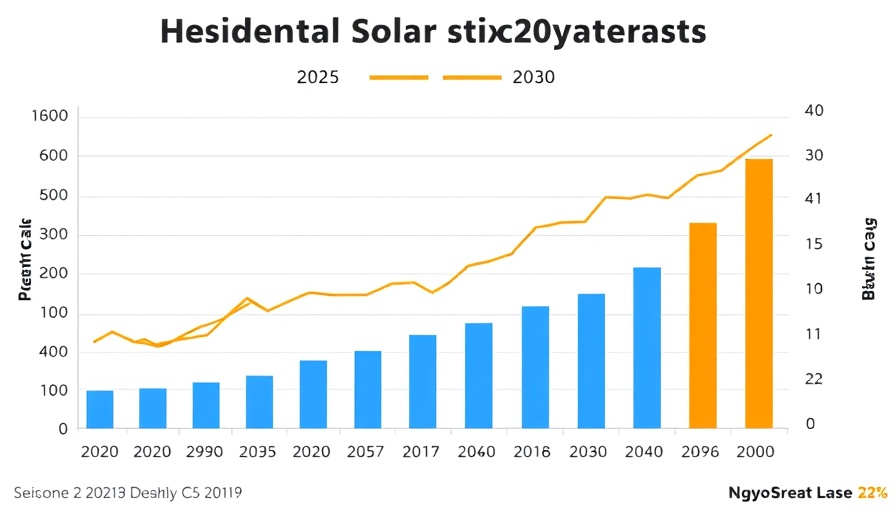
The Inevitable Impact of the One Big Beautiful Bill Act on Residential Solar
The residential solar industry is at a crucial crossroads thanks to the recent passage of the One Big Beautiful Bill Act (OBBBA). According to the latest report from Wood Mackenzie, this significant legislation threatens to drastically cut installations by as much as 46% through 2030. Given the growing trend of homeowners seeking sustainable energy solutions to curb rising costs, this policy's implications extend far beyond mere statistics.
The Cancellation of Essential Tax Credits
At the heart of the OBBBA's impact lies the cancellation of the 25D residential solar tax credit, which currently allows homeowners to claim 30% of their system installation costs. Starting in 2025, this critical incentive will cease to exist, thus making solar investments far less appealing for potential adopters. Additionally, the elimination of the 48E investment tax credit for leased solar systems further compounds the issue, particularly in states lacking supportive legislation for solar leasing.
Future Projections: A Market of Mixed Fortunes
While the short-term outlook appears bleak, with estimates suggesting severe drops in installations, the long-term potential for the residential solar market remains promising. Wood Mackenzie projects the total addressable market could reach nearly 1,500 gigawatts (GW) by 2050, driven by growing consumer interest and rising energy rates. The anticipation of returning growth after 2028 suggests that businesses willing to adapt may find new ways to thrive amidst shifting policies.
Addressing Foreign Entities and Market Adaptability
Another noteworthy aspect of the bill is its restrictions regarding project content sourced from foreign entities of concern (FEOC), which predominantly refers to Chinese manufacturers. Depending on how these provisions are implemented, certain states may experience significant reductions in available solar products, potentially creating 'holes' in the market where options for consumers become very limited.
Lessons from the Industry’s Resilience
The solar industry has a history of resilience, often bouncing back from harsh regulatory changes. Zoe Gaston from Wood Mackenzie emphasizes that while many companies may struggle or fail in the short term, the industry as a whole is likely to adapt. With further technological advancements and a focus on cost reduction, solar can regain its footing, particularly as consumer energy rates rise, making solar investment more attractive once again.
Understanding the Broader Context
Homeowners considering solar installations today should also reflect on the broader context of energy consumption and environmental stewardship. As more individuals recognize the need for sustainable energy solutions, policymakers may be compelled to revisit tax incentives and support structures that promote residential solar installations. The fight for a cleaner energy future certainly requires collective advocacy for beneficial policy changes that align with long-term sustainability goals.
The timeline for federal solar incentives may be changing, but the potential for solar energy solutions in homes remains bright, particularly as technological innovations continue to emerge and democratize access to renewable energy.
Given the rapidly evolving landscape of the residential solar market, staying informed and engaged is crucial for homeowners looking to harness the benefits of solar energy. Every voice counts in this critical conversation around energy independence and sustainable living.
 Add Row
Add Row  Add
Add 



Write A Comment